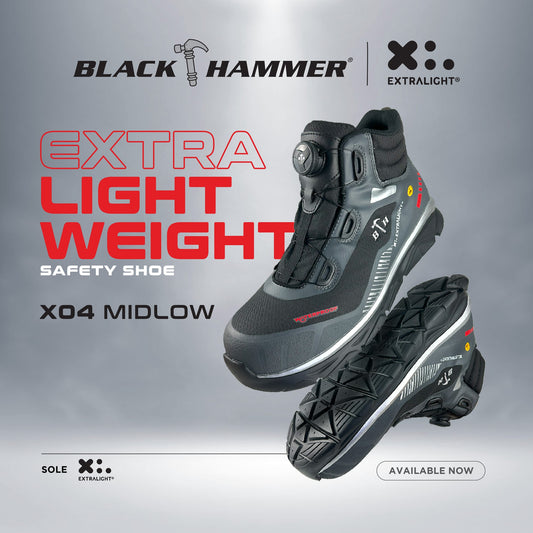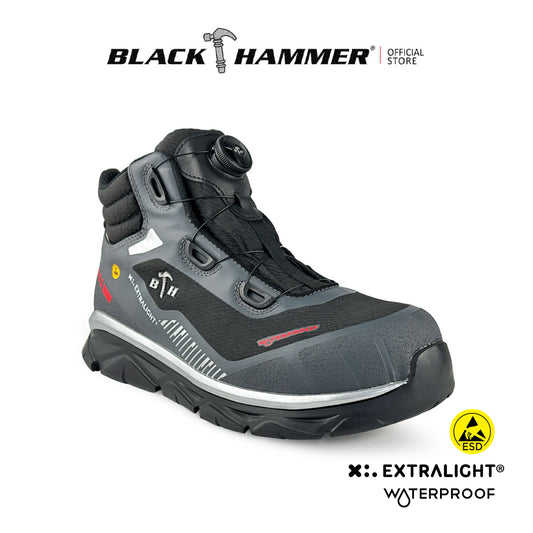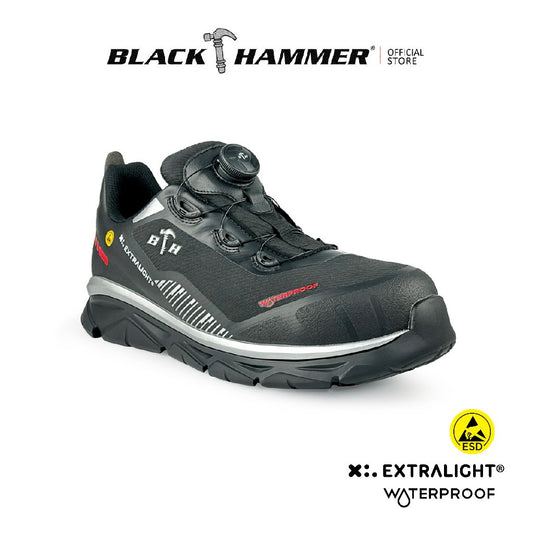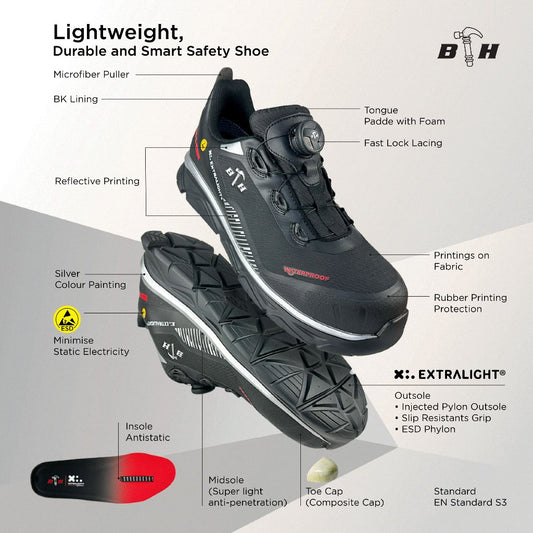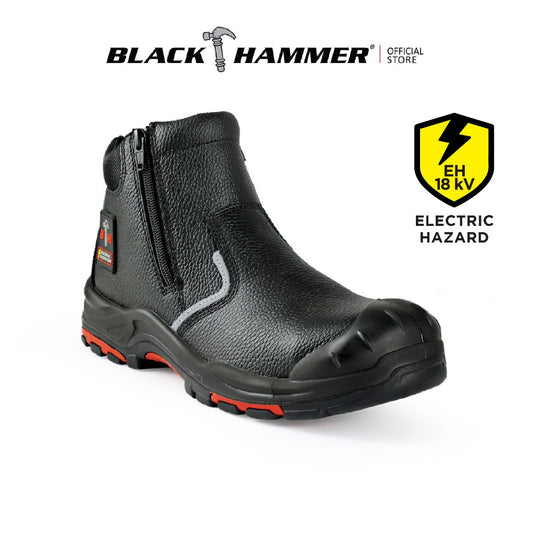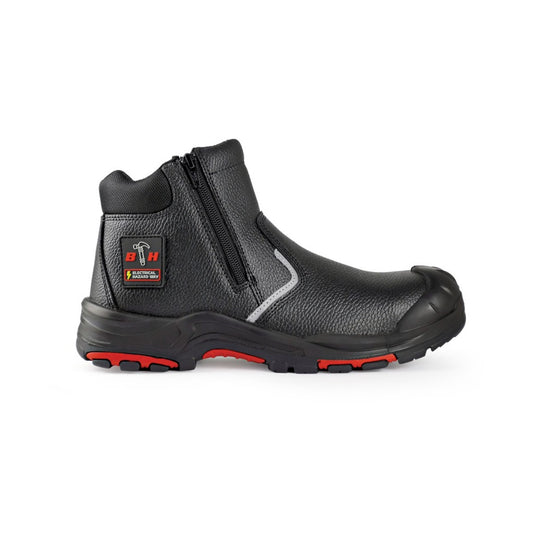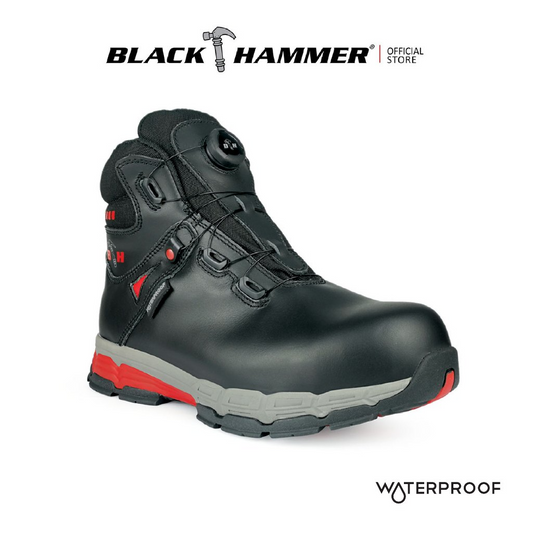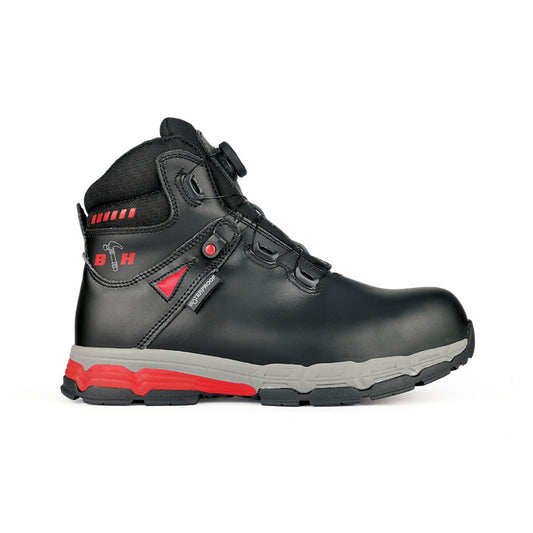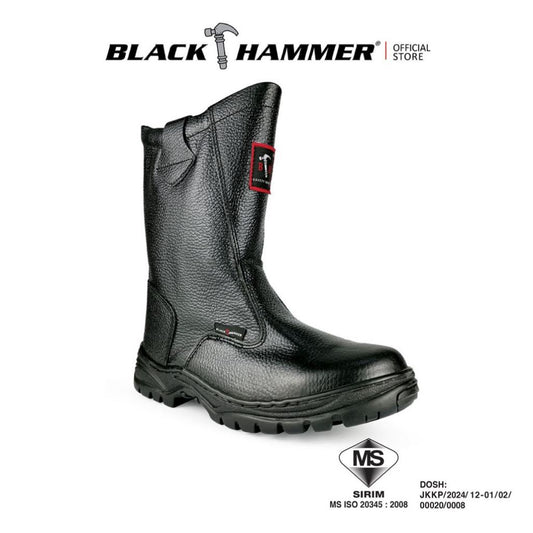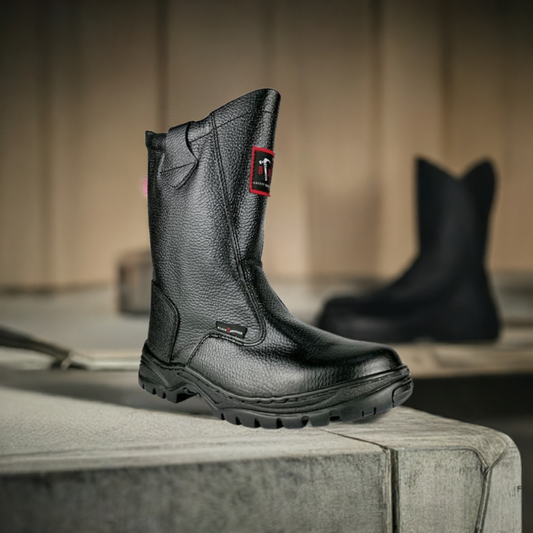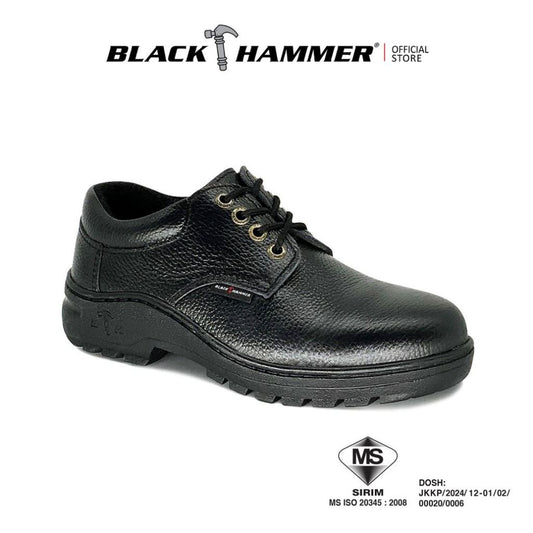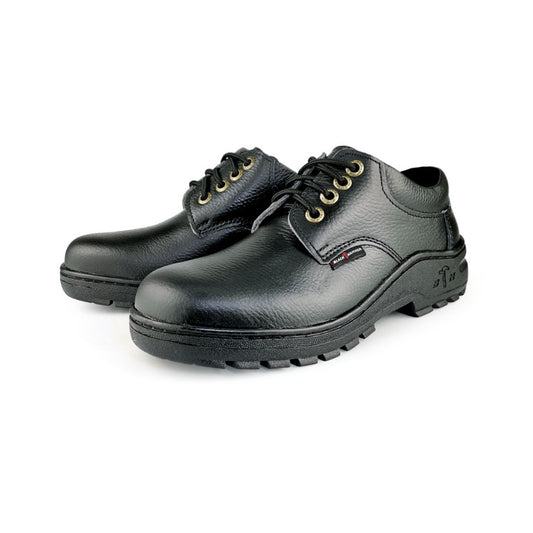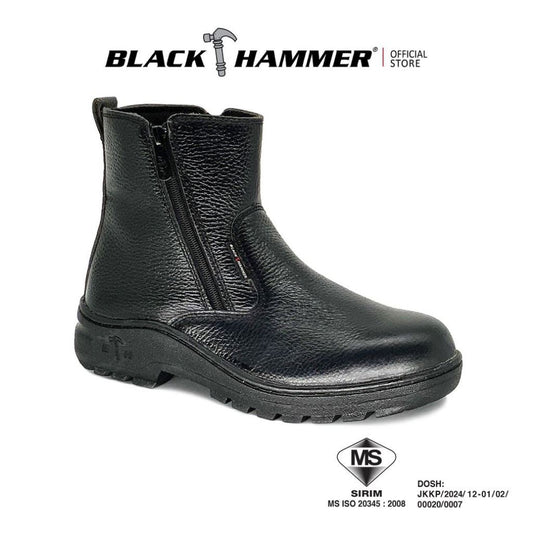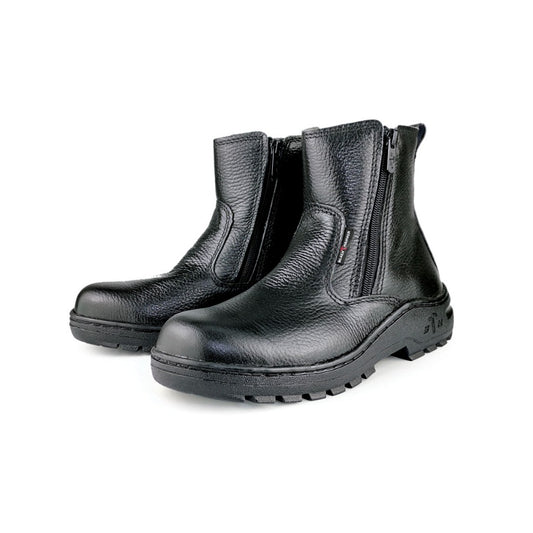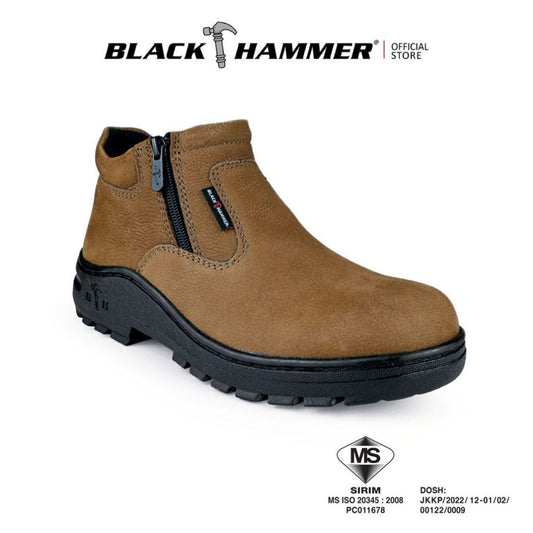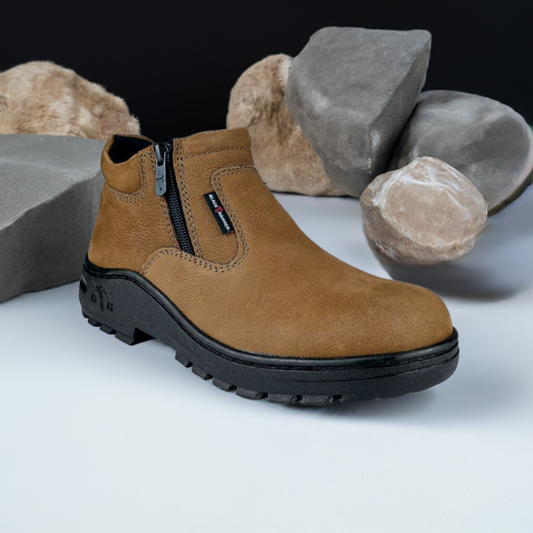
What Are the Key Features To Look For in Work Boots?
Step Up Your Safety: 6 Key Features Your Next Work Boots MUST Have!
Ever felt overwhelmed choosing new work boots? With so many options, knowing what truly matters can be tough. But here's the deal: the right safety work boots aren't just about ticking boxes; they're about empowering you to work confidently, comfortably, and, most importantly, safely.
We all know that having the proper gear makes a world of difference. It's not just about physical protection; it's about the peace of mind that lets you focus on the job. This guide will walk you through the essential features to look for in work boots, ensuring you invest in footwear that protects you from injury, accidents, and workplace hazards.
Unlock Peak Performance: Key Features to Demand in Your Work Boots
Let's break down what separates a good work boot from a great one:
1. Safety First: The Critical Role of Slip Resistance
Slips, trips, and falls are among the most common workplace accidents. A slip-resistant work boot is non-negotiable. This life-saving feature comes from:
• Advanced Tread Patterns: Designed to grip various surfaces.
• Specialized Materials:
>> Rubber Outsoles: Excellent for oil, slip, and abrasion resistance.
>> TPU (Thermoplastic Polyurethane) Outsoles: Extremely sturdy; resistant to oil, splitting, abrasion, chemicals, and heat up to 130°C (260°F).
>> EVA (Ethylene-Vinyl Acetate) Midsoles: Lightweight, flexible, and stable – a fantastic choice for climbing or extensive walking, often paired with rubber outsoles for grip.
Think about your environment: Will you encounter oils, wet surfaces, or uneven terrain? Choose accordingly!
2. Toe the Line: Understanding Steel Toe vs. Composite Toe Protection
When it comes to protecting your toes from impact and compression, you generally have two OSHA-approved choices:
• Men's Steel Toe Boots:
>> The Classic Choice: Ideal for construction sites or any environment with risks of heavy falling objects, puncture, or crushing.
>> Economical: Often a more budget-friendly option.
>> Effective Against Electrical Hazards: When properly rated.
• Composite Toe Boots (Non-Metallic):
>> Modern Materials: Made from materials like Kevlar, carbon fiber, plastic, or fiberglass.
>> Lightweight: Noticeably lighter than steel toes, reducing fatigue.
>> Climate Control: Better for colder climates as they don't conduct cold.
>> Metal-Detector Friendly: Ideal for security checkpoints.
>> Electrical Hazard Protection: Excellent for environments with electrical risks.
Consider the weight, temperature, and specific hazards of your workplace.
3. Built to Last: The Importance of Quality Construction
Beyond specific features, the overall construction of your work boots dictates their durability and support:
• Secure Fastening: Look for adjustable options like robust laces or strong Velcro straps to ensure a snug, customized fit.
• Heel Support: A well-designed heel cup and proper heel support provide stability, reduce strain, and enhance comfort, especially during long hours.
• Durable Stitching & Materials: Quality leather or synthetic uppers and reinforced stitching contribute to longevity.
4. Room to Move: Why Proper Fit and Ample Space Matter
Your work boots need to be a perfect match for your feet, even when you're in motion.
• The "Thumb Rule": Aim for about one centimeter (or roughly the width of your thumb) of space between your longest toe and the end of the boot. This prevents your toes from hitting the front, especially when walking downhill or stopping suddenly.
• Avoid Pinching & Rubbing: Ensure there's enough width and volume to prevent calluses, blisters, and discomfort. Remember, your feet may swell slightly during the day.
5. Certified Protection: Don't Overlook Safety Standards (e.g., ANSI/ASTM, EN ISO)
Reputable work boots will meet specific safety standards. In the U.S., look for compliance with:
• ANSI (American National Standards Institute)
• ASTM (American Society for Testing and Materials)
In Europe and other regions, EN ISO 20345 is the key standard for safety footwear.
What does this mean for you? Boots meeting these certifications have been rigorously tested for various protective qualities (like toe impact, compression, puncture resistance, electrical hazard protection, etc.). This is your assurance that you're investing in genuine safety and value.
6. Beyond Protection: The Non-Negotiable of All-Day Comfort
Even the safest boot is useless if it's too uncomfortable to wear. While comfort is subjective, look for:
• Proper Sizing & Fit: This is paramount. Try boots on at the end of the day when your feet are slightly larger.
• Adequate Cushioning: Consider the insole and midsole. Is there enough shock absorption for your activity level?
• Breathability: Important for preventing moisture build-up and discomfort, especially in warmer climates.
• Weight: While robust boots can be heavier, find a balance that provides protection without causing excessive fatigue.
Your Work Boot FAQs Answered
• Q: What truly makes a good work boot?
A: It's a combination of safety features (like toe protection, slip resistance), durable construction, proper fit, comfort, water resistance (if needed), appropriate boot height for your job, and adherence to safety standards.
• Q: What are the key characteristics of good safety footwear?
A: Standard toe cap protection (e.g., 200 joules impact resistance as per EN ISO), midsole puncture protection, insulation (heat/cold), antistatic properties, water resistance, heat-resistant outsoles, and energy absorption in the heel are all vital depending on the job.
• Q: Should work boots fit tight or loose?
A: Neither! They should be snug enough to provide support and prevent your foot from sliding around (which can cause blisters), but with enough room for your toes to wiggle and accommodate natural foot swelling. Refer to the "thumb rule" for length.
Conclusion: Invest Wisely in Your Safety and Comfort
Choosing the right work boots is a crucial decision. By understanding these key features – from slip resistance and toe protection to construction, fit, safety standards, and comfort – you can confidently select footwear that not only protects you but also enhances your workday. Don't just buy a boot; invest in your well-being.
